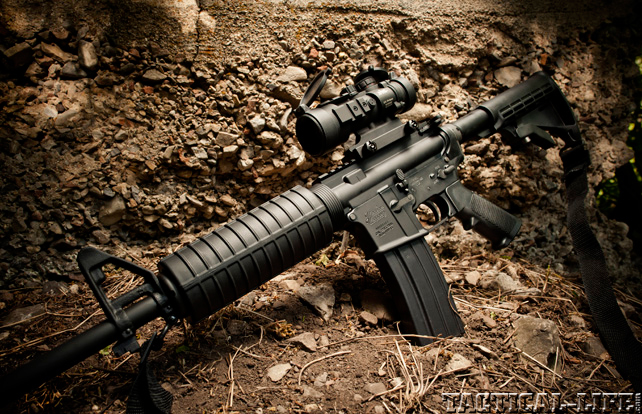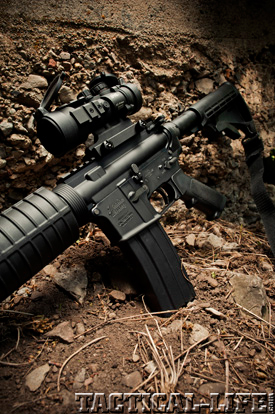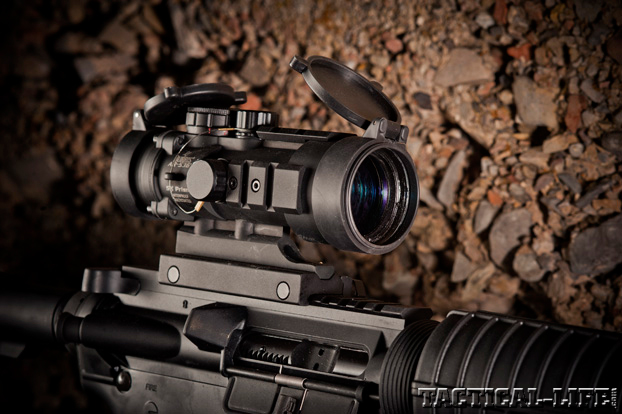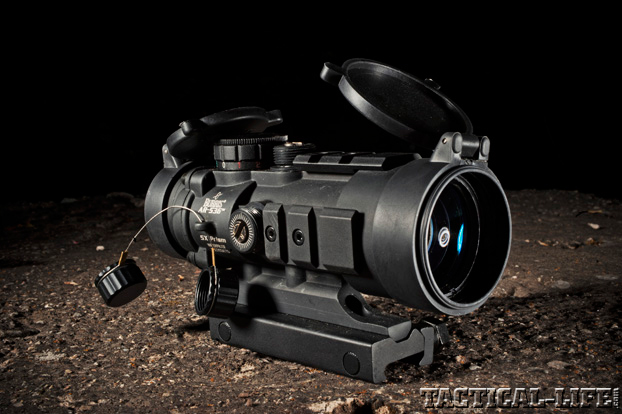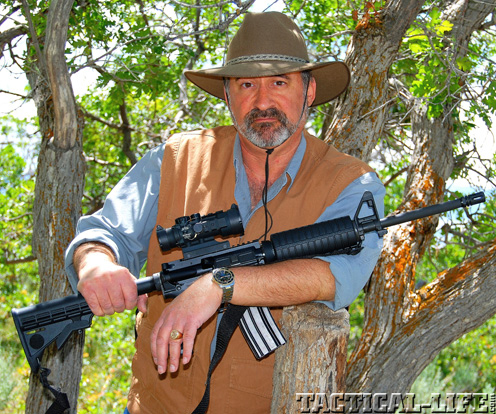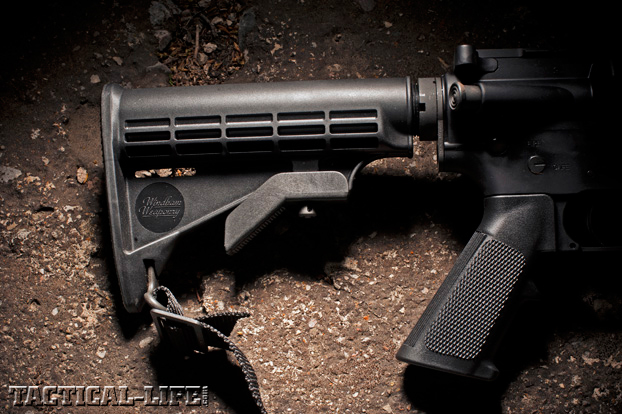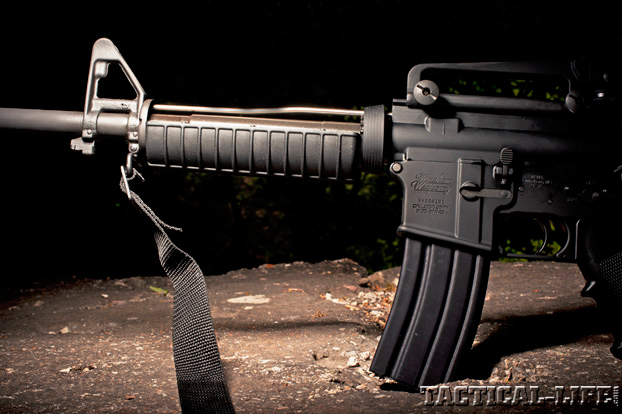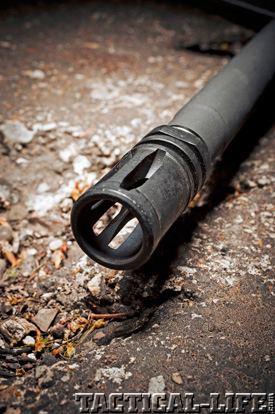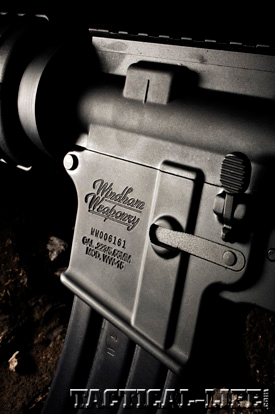When it comes to AR-15s we are now navigating a “tactical” sea. You gotta have this tactical model, you gotta have that tactical gizmo, and you can’t be cool at the range or competent in the field without spending more on accessories than you spent on your gun.
Setting up a new AR to maximize its potential for a given role is perfectly fine, but not everyone wants to spend $4,000 to do it nor spend their vacations at two-week-long carbine classes. We’re not all interested in calling ourselves operators or figuring on participating in mass zombie eradication or any form of protracted urban combat.
A basic AR carbine in the .223/ 5.56mm caliber it was developed for just happens to be a good multi-purpose tagalong for backcountry trucking, bunny busting, general Jeeping, ATV trail hopping, coyote calling, ranch rambling, camp tenting or numerous other occasions that may involve two- or four-legged critters getting too close with questionable intent. If you can’t get the job done with the perfectly usable sights of the standard platform, then just add a decent piece of glass, and you’re in business. Whether you prefer magnification or a basic red-dot, you don’t have to double the price of your base gun to get adequate performance. For those just getting into an AR, choosing which one can be a scary proposition. There are over a dozen well-known names and a few not-so-well-known ones to boot. Windham Weaponry, billing itself as “America’s newest rifle manufacturer with decades of experience” and having a humbly stated goal of building “the finest AR type rifles in the country’” is a relatively new name to the gun world. But most of the company’s people are actually old hands at the AR-15 game.
Advertisement — Continue Reading Below
Windham History
When Cerberus/Freedom Group, parent owners of brands such as Remington, H&R, Thompson/Center and Marlin, bought the Bushmaster company in 2006, the Bushmaster brand and much of its plant equipment was moved from Windham, Maine, to New York, leaving all but four of its 73 employees behind. Later a new gun manufacturer took up in the same Windham, Maine building in 2011 by Richard Dyke, the 1973 founder of Bushmaster, when his five-year non-compete agreement with Freedom Group expired. Of the current Windham employees many are former Bushmaster people with up to 25 years’ experience making guns. New outfit? Yes. But Windham Weaponry is not new to AR-15s.
Windham produces mostly carbine models but also offers longer-barreled varminters and models that are compliant with California, Massachusetts, Connecticut, New Jersey and New York state gun laws. Profiles run from the familiar carbine configurations with carry handles to the flattop free-floated 20-inch heavy-fluted stainless barreled versions. I’d canceled my subscription to the AR-15 Daily News years ago, incidentally—there were far too many AR makers out there to keep track of. It was hard to get me interested beyond the Colts I’d used professionally and privately for so many years. But the Windham story and the positive commentary of others piqued my rifle-loving curiosity.
A sample Heavy Barrel Carbine was arranged.
Advertisement — Continue Reading Below
Under Windam Weaponry HBC’s Hood
There’s nothing startlingly new about the Windam Weaponry HBC. It’s a basic-featured gun with a 16-inch heavy barrel that (astonishingly) doesn’t include a useless grenade launcher step-down. Up front was the expected closed-bottom A2 cage-style flash suppressor. On top, the familiar elevation-adjustable post in its front-sight tower and a detachable carry handle with dual short-range/long-range windage and elevation adjustable apertures. At the back of the bus, a conventional six-position sliding polymer stock. In between all that there were the usual left-side controls, consisting of the bolt lock/release tab, the two-position single-sided Safe/Fire safety switch, and the button on the right side to dump the 30-round GI-pattern Windham-marked alloy magazine. The ejection port and round forward-bolt assist are also right-sided, and the black checkered polymer pistol grip has a straight-A2 design. Nothing smacks you in the eye nor demands your attention there.
But it’s the little things that add up to big performance. That heavy barrel is constructed of 4150 11595E chrome-moly-vanadium steel (a premium standard in carbon steel for ARs) chrome-lined for long-term corrosion resistance, with M4 feed ramps and a 1-in 9-inch twist rate. Windham doesn’t cut corners by using cheap barrels. They’re air-gauged from a minimum of .219 inches to a max of .220 inches, which is half of what Mil-Spec calls for. The company says the 1-in-9-inch twist was used because it’s the most popular among commercial and LE users.
The bolt is machined from Carpenter 158 steel to resist locking lug stresses and prolong breakage better than lesser steels. It is shot-peened, high-pressure tested and magnetic-particle inspected. One of the most critical parts of the AR’s design is the bolt, and if you go low-bid there you risk a sudden and early failure (typically in locking lug fracturing) that’s not field reparable. The bolt carrier is also chrome-lined, and the gas key is well-staked. Proper staking is essential for long-term reliability—if your key loosens over time, resulting gas leakage can turn your AR into a manually-operated single-shot. The hammer, trigger, safety and bolt latch are cast, a standard across the industry.
Advertisement — Continue Reading Below
Elsewhere, the Windam Weaponry HBC wears M4 handguards with double heat shields. Ambidextrous safety levers don’t get along well with my hand. The single-sided one here does what I need it to do and adds a small position indicator on the right side of its mostly flush pivot pin, which shows at a glance whether it’s on or off—I like that. The detachable carry handle gives you the option of learning and using the basic iron sights or removing the handle and using the rail for any of the roughly 795 million different aftermarket add-on sights and optics. (Contrary to popular opinion, it is quite possible to live a full, satisfying, productive life using only the factory carry-handle irons on an AR-15. They don’t fog and the batteries never run down.)
Not all makers offer a full six-position slider like Windham does. The more length adjustments in an AR stock, the easier it is to find a notch that either adapts for your own use through T-shirt summers and parka winters or to your seven-year-old Munchkin who’s just learning to shoot a centerfire rifle. One interesting Windham deviation from an AR-15 norm is the stock’s castle nut is not staked, as many buyers swap for a different stock or add an aftermarket sling adapter and remove the nut themselves. The 7075-T6 aircraft-grade alloy receivers are black hardcoat anodized with a finer grit bead-blast than Mil-Spec and a darker shade.The Windam Weaponry HBC ships in a hard plastic foam-padded hinged carry case with the aforementioned 30-round magazine, one black nylon two-point carry strap/sling and an owner’s manual.
AR-536 Glass
The Windam Weaponry HBC already comes with everything you need for a general purpose AR, but if you prefer magnification for longer distances and darker lighting conditions—as I do—optics may be your best friend. It’s easy to get carried away but unnecessary to go huge, heavy or high-priced. Burris’ AR-536 combines 5X magnification with their Ballistic/CG ranging reticle system that can be illuminated from black display markings to either red or green, depending on preferences and lighting. Fog-proof, waterproof and shockproof, the unit mounts on either a rail or inside the trough on a carry handle. With five different light settings it can run for 500 hours on its high setting and 200 hours on low with an included lithium wafer battery. It also comes with an aluminum lens shade and two flip-up dustcovers, all for $399.
Advertisement — Continue Reading Below
In any magnifying optic with a battery-powered display, I prefer one that can also work if the electronics fail for any reason. The AR-536 is set up for effective use in bright or dim lighting with or without the red or green illumination and even if the battery dies completely. The fixed five-power image gets you out well into the caliber’s maximum effective range of 300 to 400 meters, and when mated to your chosen load the reticle display can be quite useful in long-range targeting. A bit larger than other AR-15 electronics, its sizable objective lens produces a brighter image than many smaller units.
Off-Road Ready?
Windham expects 1 MOA accuracy from this carbine, and with the right load so can you. My best three-shot 100-yard group off the bench at 0.625 inches with Winchester’s 64-grain Power Points was one of the best I’ve ever gotten in a standard configuration AR-15. Next best was a 1-inch group with Black Hills’ 50-grain Barnes TSX loads.
The carbine is well-built, accurate and reliable, and the AR-536 was very easy to work with. I consider the combo road ready for everyday applications around my neighborhood and far beyond. For more information, visit windham weaponry.com or call 855-808-1888. For more on Burris, visit burrisoptics.com or call 970-356-1670.
Advertisement — Continue Reading Below
